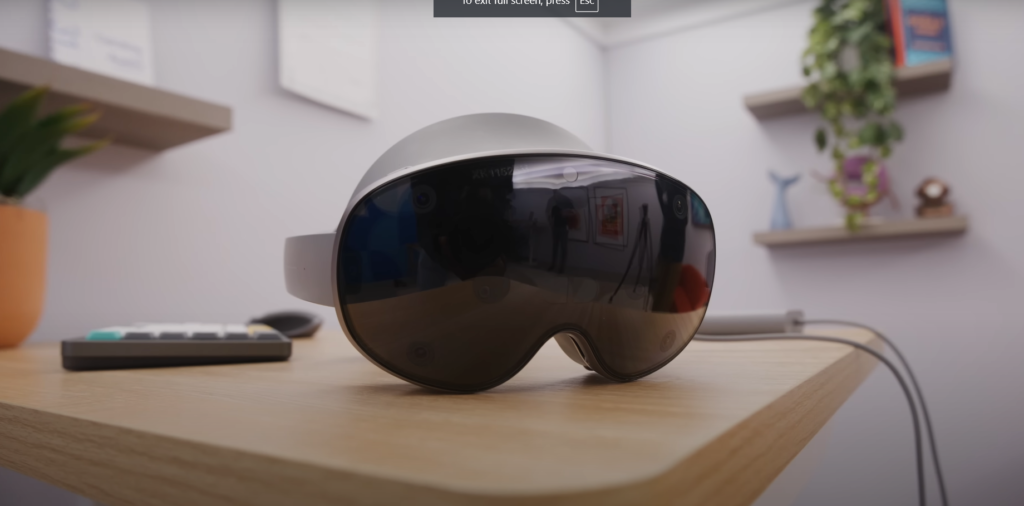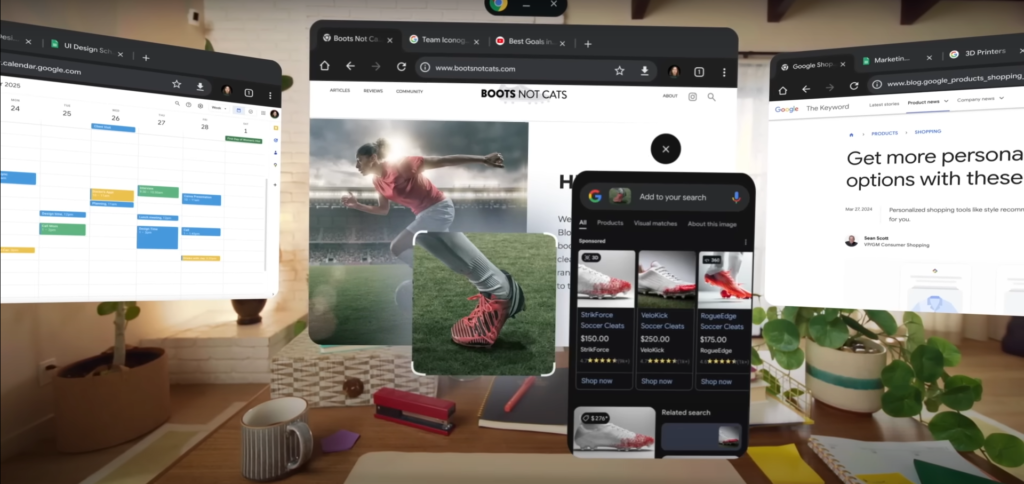
Samsung Project Moohan: An In-Depth Look at the Future of Mixed Reality
Samsung recently unveiled its previously unannounced prototype VR headset, Project Moohan—a bold move that not only generates excitement in the tech world but also promises to set a new direction in the realm of mixed reality. The creation of this headset involves deep collaboration with Google, making it the first device to run on the Android XR platform. Let’s dive deeper into how this project intends to overcome the existing fragmentation in the current VR and mixed reality landscape by offering a unified experience.
The Need for Change in the Technological Landscape
In today’s world, the market for VR and mixed reality headsets faces a problem: different companies offer their own platforms and software ecosystems, creating certain complications. Apple’s Vision Pro, Meta’s Quest, and many other headsets come with their own operating systems and user interfaces, making it difficult for developers and consumers to achieve a unified experience. In this context, the emergence of Project Moohan could be a turning point. With Android XR, this headset will provide developers with a single platform, enhancing opportunities for improved applications and user experience.
Project Moohan Design: A Blend of Aesthetics and Functionality

Appearance and Materials
The design of Project Moohan catches attention at first glance. Its lightweight fabric finish and glossy reflective glass front panel immediately intrigue tech enthusiasts. However, there’s an interesting change to note: unlike Vision Pro, this headset does not have an external screen displaying the user’s eyes. This subtle but important distinction not only introduces novelty to the design but also considers aspects of privacy and comfort.
Comfortable Fit and Adjustable Features
The rear part of the headset has also been carefully thought out. With a supportive cup and adjustable disc, the weight of the headset is evenly distributed across the user’s forehead. This helps reduce discomfort during extended use. The design of Project Moon is not only visually appealing but also practical in terms of user comfort.
Integrated Hardware and Features
The front panel of Project Moohan is not just a stylish casing; it houses powerful hardware. Inside, it features a Snapdragon processor, delivering high performance and energy efficiency. Additionally, the headset is equipped with a variety of sensors, cameras, and a touch panel that help control various functions. The touch panel on the right side allows for easy navigation of the interface, making its use simple and intuitive.
Smart Power Management
Another important feature is the external battery pack, which connects via USB Type-C. This battery is easily replaceable, giving users the option to not only use the included battery but also choose higher capacity batteries if needed. Such flexibility increases the headset’s battery life, which is especially important for those who want to enjoy mixed reality for extended periods.
Android XR and Google Gemini: A Stunning Software Combination

Unified Software Experience
Project Moohan runs on the Android XR platform, specifically designed for mixed reality. This platform is reminiscent of the times when Google revolutionized the mobile world with the Pixel and Nexus series. Using Android XR not only provides developers with a unified environment but also ensures users have a simple and convenient interface.
Main Menu and User Interface
The headset’s main menu is extremely intuitive and easy to use. The app list with scrolling, quick settings, and a list of recently used apps allow users to easily navigate their preferences. Returning to the home screen with a simple button press or hand tracking makes the process as convenient as possible. Such an interface frees the user from unnecessary complexities.
App Ecosystem and Multitasking
Another big advantage of Android XR is its compatibility with all apps from the Google Play Store, whether they are phone, tablet apps, or specifically created for mixed reality. For example, the specialized YouTube app for mixed reality offers an immersive experience, allowing users to customize windows and change the environment to their liking. Such flexibility opens up new possibilities for developers and creates a vast app ecosystem.
Controller-Free Management and Multimodal Interaction

During the demonstration of Project Moohan, it became evident that the hand and eye tracking technology is so impressive that external controllers are not required. While controller support may be added in the future, the current natural user interface makes the headset even more appealing. Users can control their favorite activities with hand gestures, pinches, and voice commands.
Google Gemini AI: Your Personal Assistant
Smooth Navigation with Voice and Visual Commands
The most outstanding feature of Project Moohan is the integration of Google Gemini AI. This artificial intelligence can be seen as the user’s constant companion. A simple button press initiates a live dialogue, allowing tasks to be performed without unnecessary complications. Whether it’s reorganizing windows, searching for nearby attractions, or switching modes in Google Maps—Gemini AI handles everything through voice commands.
Multimodal Capabilities
The main advantage of Gemini AI is its multimodality. The headset’s cameras and sensors allow Gemini to see what the user sees. This means it can instantly identify an object or place you’re looking at and provide information about it. For example, if you point to a road sign, Gemini can translate it or give detailed information. This feature is especially useful for travelers, navigation, or obtaining local information.
Gesture-Based Search and Interface Management
Another interesting feature is the ability to “encircle for search.” The user can use hand gestures to search for objects or signs in the real world. However, there are still some flaws in this feature: if the hand stays within the circle, Gemini may start searching for an image of the hand itself. Nevertheless, this ability demonstrates the potential of future mixed reality in bridging the gap between the real and digital worlds.
Enhancing User Experience
Gemini AI can also independently organize the interface. If you have multiple windows open, it can arrange them, close unnecessary ones, or even help navigate within apps. Such automatic control reduces fatigue and provides a smooth and seamless experience.
Project Moohan’s Market Position and Prospects
A Step Towards a Unified Platform
The diversity of platforms in VR and mixed reality headsets has become a significant issue. Apple, Meta, and other companies offer their own ecosystems, making it challenging to create a unified experience for developers. With the emergence of Project Moohan, Samsung and Google are attempting to address this problem. Based on Android XR, this headset provides developers with a single platform, simplifying app development and offering users a cohesive experience.
Potential Market Impact
A successful launch of Project Moohan could herald a new era in the VR and mixed reality market. Unique features—intuitive design, advanced hardware, and smart software—set it apart from competitors. Users will be able to enjoy a unified experience without the confusion of different operating systems and platforms, expanding the user base and opening new opportunities for developers.
Competitive Advantage
Compared to Apple’s Vision Pro and Meta’s Quest, Project Moohan’s strength lies in the combination of the Android XR platform and Gemini AI. Vision Pro is renowned for its high-quality hardware and design but lacks AI features and an intelligent assistant. Project Moon combines both aspects, offering not only an immersive experience but also simplifying everyday tasks.
Conclusion
Samsung’s Project Moohan is not just another VR headset; it is a step into the future of mixed reality. Innovative design, advanced hardware, the Android XR platform, and the integration of Google Gemini AI make it a unique choice in the current landscape. This headset promises a unified, intuitive, and powerful experience for developers and consumers, addressing the issue of fragmented platforms.
Although Project Moohan is still in the prototype stage and changes may occur before its final release, the enthusiasm and commitment of Samsung and Google are evident. In the coming months, the release of this headset could open a new chapter in the tech world, fundamentally changing the mixed reality experience.

